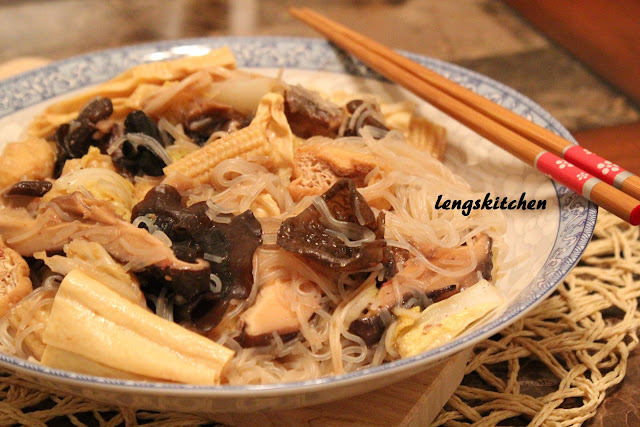
Kam Heong Crab 金香炒蟹 has got to be one of the many all-time favorites of hubby. While I probably shall never consider myself a big fan of Crustaceans in general, nibbling and getting my fingers dirty picking at these crabs are something that I do enjoy still once in a while - they really are a part of the pleasure of eating crab and joy of the occasional bare-hands eating experiences. My very personal history of crabs started with those nicely and patiently picked by my dad and mixed into my plate of plain rice when I was way too young. And then I started having them the most basic way - steamed whole before I developed a liking for spicy food like everyone else in my family. That was when I started digging into the huge plate of mom's very own specialty chili crab at home.
So apart from those methods of preparing it at home, the rest was made known to me through the many years of dining out. There are this "kam heong" way of making it, the salted egg version, the sweet and sour, the salt and pepper, the ginger and scallion and it goes on and on. But of all, the "kam heong" way is by far my personal favorite when dining out. Literally translated to mean "golden fragrant", it does indeed come with a fragrance unique to the dish which I think I shall attribute to the presence of the curry leaves. Aromatic in nature, a sprig or two is always good enough to bring the dish a different dimension on its own and especially so when made to complement the many other aromatics used here - the dried shrimps, birds eye chilies, curry powder, shallots and garlic. Elaborated on the whole yet not too overwhelming that it conceals the freshness of the crabs within. As for the golden part, I guess the final appearance does somewhat justify the name after all.
My first few attempts at making this had kind of failed. Or probably inconsistent will be a better word here. On some occasions they looked and tasted fine. On others, you just know it wasn't right when your plate of crabs looked slightly wet in general, lightly drenched in some unintended gravy even. So with enough wrongs done, I think my failures could be tracked down to me again and again easily succumbing to the temptation of adding in some water in the process. This is especially so when dry frying the aromatics in the well heated wok looked too dry as if they will get burnt any minute if left unattended. So with some water in, the dry frying process gets halted locking in the flavors prematurely. At the same time, they create a steaming effect and that is when I will end my crabs up in a mini pool of not-so-flavorful gravy. So lesson learned here - "kam heong" is very much like dry frying the aromatics bringing out the best flavor they can offer and have them coated all over the crabs. The crabs are deep fried prior to cooking. So with this bit of oil clinging on to them, plus a little more used for dry frying the aromatics later together with the wet seasoning, coating should be the last thing you will have to worry about really - they simply will and should cling and coat conveniently. But if you must introduce some moist at any points, do really limit them to a few sprinkles of water and nothing more.








































